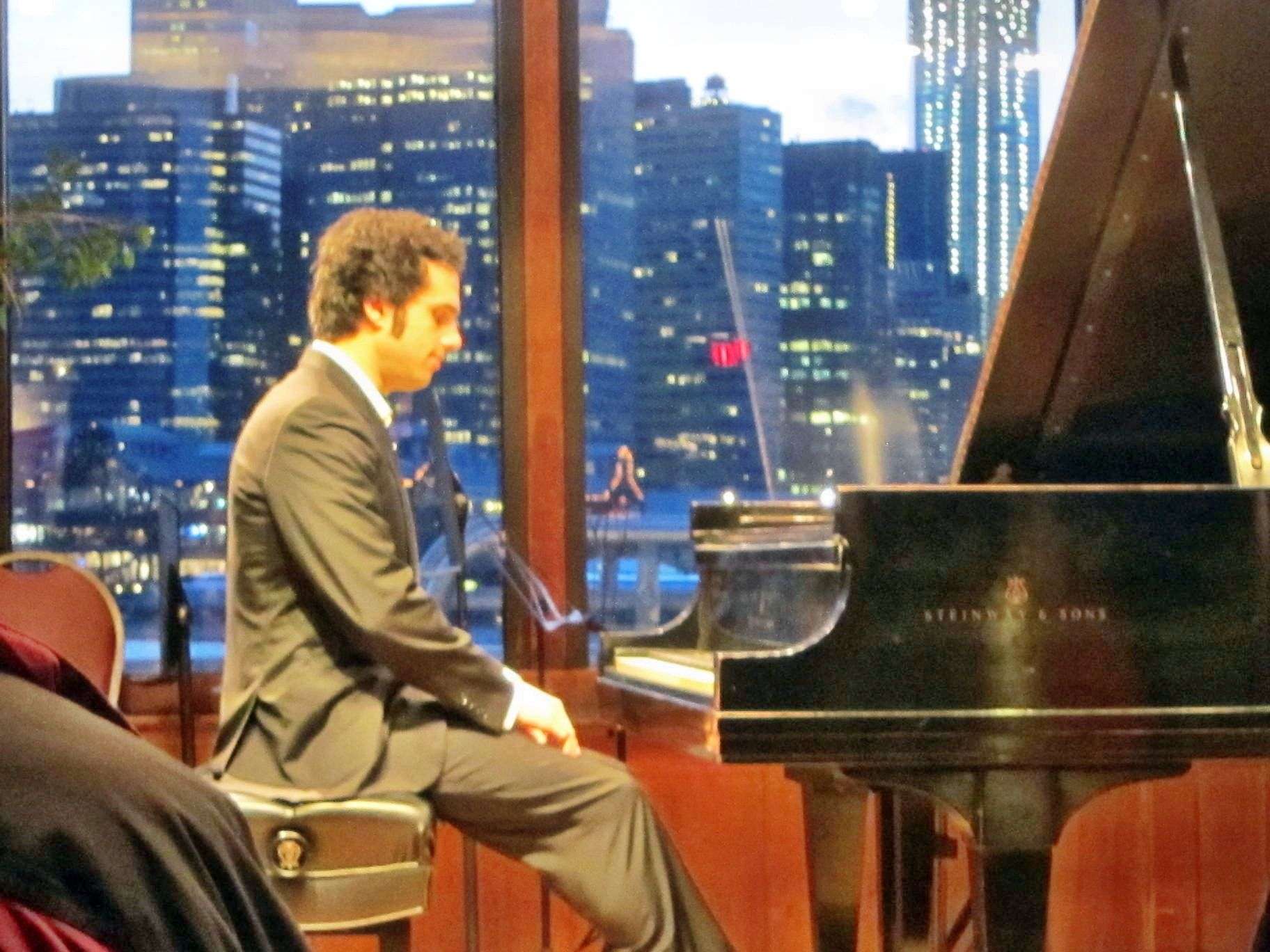|
Back
Invitation to the Dance New York
BargeMusic, Brooklyn
04/27/2012 -
Franz Schubert: Sonata in A minor, D. 845, Op. 42
Sergei Prokofiev: Romeo and Juliet: Ten Pieces for Piano, Op. 75
Ludwig van Beethoven: Sonata No. 18 in E-flat Major, Op. 31, No. 3
Soheil Nasseri (Pianist) 
S. Nasseri at BargeMusic (© Coco T. Dawg)
Among the many accomplishments of Soheil Nasseri was his performance with the American Ballet Theatre, for an all-Chopin performance. He was in costume, he acted, and he played Chopin on stage in the ballet Lady of the Camelias.
I note that not only because of his popularity with his colleagues (some of whom traveled out to Brooklyn for his recital last night), but because Mr. Nasseri is obviously as much in love with the dance as with the piano.
True, his numerous recitals highlight the usual suspects–Beethoven, Schubert, Chopin. But several composers have written for him, and his world-wide wanderings (including to the home of his Iranian ancestors two years ago for some very successful recitals) have enabled to him to amass a significantly large repertory.
But last night, his joy was reserved for the dance. Not only the ballet but the dance of Beethoven. He was never over-ebullient, he rarely allowed himself to drift from notes to terpsichorean antics. But here is where Mr. Nasseri pulled apart from being a first-class pianist into a personality of his own.
His first half at BargeMusic was what I felt was a lackluster performance of Schubert’s late A Minor Sonata. Granted, this is a wicked challenge, for the sonata follows no emotional rules, going from the intensely dramatic to the sweet and simple.
But that opening Moderato lays out such concentrated intensity at the beginning that Mr. Nasseri did neither Schubert, himself, or ourselves any favors by skipping the repeat. It takes time to digest the music, but he went straight into a development before we heard what was happening.
The following movements were played with technical skill, but little poetry, and nothing to elevate the music above good playing.
That, though, was before Mr. Nasseri played what he was born to play. A short introduction before the Prokofiev (even the most stolid pianists are inspired by BargeMusic’s breathtaking background) explained his love for the dance. So when he launched into Prokofiev’s own arrangements from his Romeo and Juliet, it was a different pianist at work.
The pieces are extremely difficult, for they were meant for the master-pianist composer to play. But Mr. Nasseri sailed though them with brightness, buoyancy and a mastery of the rhythmical difficulties.
The ballet, which today can be danced by any professional troupe, was indeed considered much too difficult for its time, and the piano transcription–which is anything but a piano reduction–shows that.
Yet Mr. Nasseri not only made the inner lines sing, but gave a most moving final movement of the “parting” of the lovers.
The work is rarely played in public, so Mr. Nasseri’s performance was a tribute to his own skills and our own enjoyment.
Following this was Beethoven at his happiest. Mr. Nasseri had no problems with the technical demands, trilling through the first movement, and letting his fingers happily play through the next sections.
But the final movement–played presto con fuoco–brought the dancing skill of Mr. Nasseri to the front. Perhaps the “fire” was not a flame, but making up for this was a storm of digital dancing. Some pianists make a point of showing their technical skills here. Mr. Nasseri didn’t need to do that. He wanted to make that heavy-visaged Beethoven actually dance. The image is a wee bit grotesque, but Mr. Nasseri gave it a frolicking image.
Harry Rolnick
|